- Home
- Isaac Hooke
Test of Mettle (A Captain's Crucible Book 2) Page 2
Test of Mettle (A Captain's Crucible Book 2) Read online
Page 2
It wore a harness of some kind on its chest. On the back was an object resembling a jetpack, replete with black tanks and nozzles. An object clipped to the chest area matched the small rectangular device Wolf had brought back—the darkness generator. Fitted onto the top joints of the forelegs were small black tubes: the infrared laser weapons their infantry utilized, most likely.
“So these are your chickens, Robert,” Jonathan said quietly to himself.
“Excuse me?” Connie asked, coming to his side.
“Nothing,” Jonathan said. “Just a theory Commander Cray has.”
His executive officer, Robert Cray, had speculated that because of their abilities to travel through Slipstreams without Gates, and their apparent propensity to sire their offspring in the ruins of Elder ships, the aliens were descended from the Elder, the ancient race that once ruled that quadrant of the galaxy but vanished without a trace sometime between three and eight hundred thousand years ago. Robert theorized the Elder hadn’t actually vanished, not all of them anyway, and that the aliens the fleet had encountered were simply evolved members of said race, albeit a species that had changed so much since the time of their ancestors that they were the Elder equivalent to the chicken—the closest living relative of the once mighty Tyrannosaurus Rex.
Jonathan looked away from the glass tank to glance at her. “So what happened?”
“I was summoned here by the AI,” Connie said. “Apparently, the darkness abruptly lifted at oh five hundred. The power source finally ran out, I suppose. The alien inside is definitely dead.”
He stared at the strange body. “I guess I always thought they’d look more human. You were right about the suits, I see. Or lack thereof, anyway.”
“Yes.”
The human subjects who tested the darkness generator always had to wear spacesuits because of the hydrogen sulfide environment that surrounded the user within. Because of it, Connie had hypothesized that, in addition to functioning as a shield, the darkness served as a complete environmental suit.
“Is the body still emitting gravimetric distortions?” Jonathan asked.
“It is,” Connie confirmed. “So we’ll have to keep applying new layers of glass and ThermoPlastic Urethane every few days. I’m still not sure why its body would emit such waves. My guess is that it doesn’t reside entirely in the known universe.”
“Even in death you make us work,” Jonathan said softly. He glanced at Connie. “Do you think it’s a ruse? Merely playing dead?”
She frowned. “It’s possible. I’ll take the utmost precautions when dissecting the alien and retrieving its equipment. I’ll leave everything inside the container at all times, unless I get your approval.”
Jonathan studied the glass partition that separated the tank into two chambers. Robotic arms had been mounted into that partition, which could be used to manipulate the alien without actually entering the chamber that contained it.
“That will keep the doc happy, anyway,” he said. “Not to mention Maxwell.” The latter was the ship’s AI, which constantly quoted alien containment protocols. “Are you happy, Maxwell?”
“Extremely,” the AI’s voice returned via the aReal. “The threat of extraterrestrial virus transmission is non-existent under the current setup. Though I would still recommend moving the research to an off-ship location, such as a shuttle, as dictated by protocol—”
Jonathan cut him off. “Thank you, Maxwell.” He and Connie had already discussed such a scenario, and had dismissed it as unfeasible. That didn’t stop the AI from nagging them about it at every possible opportunity.
Jonathan turned to Connie. “Keep me posted on your findings.”
He left cargo bay seven and made his way toward the bridge. He paused outside sick bay on the way.
The Callaway’s resident telepath lay within. Barrick. The man was kept permanently sedated and under twenty-four hour surveillance for his mutinous attempt to assume control of the ship during the final battle. His mind link with the captured alien had ended in disaster: the creature had turned him into a weapon, enhancing his powers to obscene levels and then unleashing him against the crew. The aliens were obviously telepathic themselves, though presumably could not interact with ordinary human beings save through conduits like Barrick.
With his powers Barrick managed to convince the crew that all the friendly ships in range were enemies, turning the Callaway against her own fleet. If it weren’t for the quick-thinking AI, which had routed control of the ship to the chief engineer, then the outcome of the battle would have been much different.
Jonathan wondered if Central Command would ever wake the man once the captain delivered the telepath into their custody. Somehow he doubted it. Barrick was just too damn powerful.
Yes, it was far better that he remain sedated for the rest of his life, never to know consciousness again. Far, far better.
Jonathan shook his head and moved on.
two
On the bridge, Jonathan only had two hours to wait before the first watch relieved the night crew. The replacement personnel arrived nearly in unison, and after taking their spots at the Round Table, each member wished the captain good morning. He nodded in return: Jonathan usually arrived on the bridge at least fifteen minutes early, so no one was surprised to find him already in his customary seat facing the main hatch.
The crew sat in a circle, facing one another at their various duty stations—little more than empty, curved desks. There were no screens, displays or control panels. Instead, fingers gestured soundlessly, lips moved silently. To an outside observer it would seem they were mimes dressed in utilities, living in a world that only they could see and hear.
Some officers wore aReal spectacles, though most had either the contact lens and earpiece versions, or Implants installed directly into their brains. And though they faced one other, nobody really looked at anyone else. Their eyes were focused on the graphical overlays their aReals produced, which could be shared with the bridge crew or kept private.
The compartment itself resembled the inside of a giant pneumatic tire, with concave metal bulkheads aligned to a flat overhead and deck. The bridge was purposely located near the heart of the Callaway, well away from the hull, and protected by multiple layers of decks and compartments.
Robert seated himself on the captain’s right. “So. What’s on the agenda today?”
“Same as yesterday,” Jonathan said. “We wait for the Builder to finish running tests on the new Contessa Gate. And we keep an eye on 2-Vega.” The latter was the Slipstream the task group had mined with nukes as a deterrent against the arrival of enemy reinforcements; it was located on the far side of the sun and led to an uncharted brown dwarf about forty-eight lightyears coreward. Contessa Gate, meanwhile, was the circular ring they were constructing that would allow their ships to travel through the 1-Vega Slipstream and back to United Systems territory.
There was a final Slipstream in the system, 3-Vega, located near the inner planets. That one looped back into human territory, terminating inside a star in Sino-Korean space. Jonathan’s task group had originally been assigned the questionable mission of deploying a planet killer into the core of that star via 3-Vega. A retraction order had arrived much later, after Jonathan had already mutinied against Admiral Hartford Knox, the task group commander who had died while trying to deploy the weapon.
Jonathan glanced at the tactical display whose data was fed to his aReal from the Combat Direction Center, or CDC, where all sensor data was processed. It was represented as a three dimensional grid overlaying his vision. On it, the overall task group was labelled TG 72.5. The individual members of said group were represented as blue dots clustered around the 1-Vega Slipstream on the outskirts of the Vega 951 system.
The harvester vessel Grimm and her destroyer escort, the Aurelia, had just returned from the gas giant Achilles, where the Grimm had deployed a collection device in the upper atmosphere to sieve geronium—starship fuel—and hydrogen. Via a special reac
tor, the latter was converted into helium, which was the inert gas used as a propellant. The energy from said reaction was also used to transform the geronium into a readily usable isotope.
The Marley was the Builder ship that had constructed Contessa Gate. Rounding out the task group were the Callaway, Salvador, Dagger and Maelstrom—the flagship, two destroyers, and a frigate, respectively.
Jonathan accessed the Callaway’s status screen. Nearly six months had passed since the alien attack. Enough time for the repair swarm to mend the major structural damage to the ship. With raw materials mined from a nearby asteroid, the drones had 3D-printed superheated metal into the gash that had been torn along the entire length of the port side as well as the numerous holes the enemy fighters had riddled the ship with, not to mention the three-deck gap Chief Galaal had blown in the hull to repel an alien intruder. There had literally been hundreds of breaches. Once the hull was sealed, and the micrometeor-repelling Whittle layer was reapplied, the small machines worked inward, reattaching any wiring and other conduits along the way, then 3D-printing superheated metal into the missing portions of the hull frame, including the radiation shielding. Launch bays two and six had been restored. Mess hall one and main sick bay had been restored. Reactor one was back online.
The bank of port Vipers had been repaired, though missing elements prevented the completion of the optics and rendered that bank of heavy lasers inoperable. The starboard Vipers were also offline thanks to a melted power system. On the plus side, the chief weapons engineer had taken the unused processors from the Vipers and used them to upgrade the mag-rail targeting systems so that the point defenses could better acquire any enemy fighters. Other ships in the fleet had made similar upgrades to their targeting systems, at the expense of a few lasers.
So with the port and starboard banks offline, the Callaway only had five of the medium range lasers on the nose, and another five on the aft. That meant the flagship was the most crippled, at least in terms of medium-range capabilities, among the war ships in the task group.
Most of the point defense batteries were active. They had replenished the slugs used by the mag-rails with raw materials from another nearby asteroid.
Long range weapons were a mixed bag. On the one hand, they had replenished their offensive mortars using the same asteroid they’d mined the slugs from. But the problem with mortars was that the weapons had no propulsion systems, and were basically big rocks used to herd enemies into the smarter missiles and nukes. Unfortunately most of the fleet had exhausted the latter long-rangers, and couldn’t make more—the 3D printers were missing the certain rare metals necessary to complete them. Fusing hydrogen into helium for propellant was one thing, but creating the heavier elements required a specialized ship they didn’t have. The only warship with any remaining long-rangers was the Aurelia, which had stayed behind to guard the Grimm and Marley in the last battle. It had one nuke aboard, and five kinetic kills.
Jonathan almost considered retrieving the nukes clustered around 2-Vega if only to replenish their inventory, but decided the weapons were better used as smart mines.
They weren’t entirely out of long-rangers: each carrier ship still had a cache of the smaller Hellfire X90 missiles designed for Avenger fighters, though of course those couldn’t be fired directly—the launch tubes didn’t work with that class. Even so, if launched strategically by the fighters, those missiles could function as appropriate substitutes for their bigger cousins.
Speaking of the fighters, Red Squadron no longer existed. It had been completely decimated in the last battle. That left only Orange, Blue and Black Squadrons, and the fighters remaining aboard the other destroyers.
Jonathan shook his head. So many dead. Nothing could replace the loss of life. You couldn’t 3D print a human. In total, the Callaway had suffered three hundred seventy-two casualties: two hundred ninety-eight crew, seventy-four civilians. Survivors from the other destroyed vessels had replenished the ranks, and the Callaway was not short of hands. Even so, Jonathan felt personally responsible for every death that had occurred, not only on the Callaway, but all the ships under his command. He had spent the entire first month after the attacks writing letters of condolence to the families. That had been one of the worst months of his life.
None of those digital letters would be delivered until the Gate was complete and they returned to civilized space. He dreaded the flood of responses that would come. Some families would accept what had happened. Many would blame him.
He would accept that blame as part of his punishment for losing all those lives. And he would resign, if there was a big enough public outcry. He was already going to face a full inquiry when he returned, once the AIs of the various ships reported the mutiny Jonathan had attempted against Admiral Hartford Knox.
When he returned...
That wouldn’t be long. “A few more days of structural testing,” the captain of the Marley had told him. “And Contessa is golden.”
Jonathan accessed the video feed from the forward drone and zoomed in on the Gate. The Builder had basically completed the gravitational distortion device. It was composed of individual segments fifty meters wide that combined to form a circular ring ten kilometers in diameter. The radius and thickness of the individual segments were tailored to each individual Slipstream, and served to reduce the gravitational shear forces that would otherwise tear a ship apart during passage. One could emerge from a Slipstream at the natural egress point without a Gate, but one could not enter. The aliens, however, possessed tech that allowed them to pass through Slipstreams both ways without Gates. Jonathan had footage of the final dart ship fleeing the system via 2-Vega to prove it.
He spotted the Grimm near the outer edge of the Gate; the squarish Builder vessel slowly maneuvered along the perimeter, performing its structural scans. Beyond the Gate, space seemed perfectly normal. The constellations weren’t distorted, and there was no hint that passing through would transport one light years across the galaxy to Prius 3.
The first order of business when they reached Prius 3 was to dispatch a comm drone informing NAVCENT of their situation. He would request reinforcements, and recommend the evacuation of the dome colony on Prius 3A. Jonathan planned to remain in the system to guard the Gate leading to Vega 951 until relieved, which would be a few weeks at least given that there were another two Gate jumps to any substantial United Systems military presence, and Prius 3A’s tiny garrison only had two corvettes. A telemetry drone would remain behind in Vega 951, with instructions to enter Contessa Gate and warn them if enemy reinforcements arrived.
“Another beautiful morning in Vega 951,” Robert commented, drawing Jonathan from his thoughts.
“Vega 951,” Jonathan deadpanned. “System of princes.”
“Paupers, more like.” Robert extended his noise canceler around the captain so that they could speak in private. “It’s a good thing we’re leaving soon. I don’t think the crew can take any more of this tension. Stress leave is at an all-time high. And we’ve had more suicides in the past six months than the past six years.”
Jonathan nodded slowly. “We’ve lost a lot of good people. It’s only natural that tensions are running high. And that some people, perhaps grieving for lost friends or family, can’t take it anymore. But even when we pass through that Gate, I don’t expect the tension levels to die down anytime soon. Only when fleet reinforcements arrive and we’re on our way back to main United Systems space will the apprehension really abate. I know I won’t rest easy until then. Scratch that: I don’t know if I’ll ever rest easy, knowing we have a new enemy out here.”
Robert frowned. “Maybe we can sue for peace.”
“Perhaps eventually,” Jonathan said. “When both sides grow weary of the war that must surely come. Even if the alien reinforcements never arrive, humanity will likely stage a preemptive counteroffensive at some point. The enemy struck first, after all. We’ll never feel that the systems neighboring Vega 951 are truly safe, not while the enemy lie
s somewhere in wait out there. NAVCENT will want to explore the uncharted territory that lies at the terminus of 2-Vega. We’ll be sending ships, either overtly, or covertly. And those ships will likely be perceived as aggressors, even if they don’t fire first, and the enemy will repel them and then launch a counter sally into our space. Back and forth it will go until, fatigued by war, humanity and the aliens at last sign a peace accord. Once that’s done, I give it fifty years before one side or the other breaks the treaty and reignites aggression.”
“Always the pessimist, Jonathan,” Robert said. “But there’s one small flaw in your assessment: you’re treating the aliens as human. These aren’t Sino-Koreans with motives we can fathom, you know. Their thinking will be completely alien to our own. I’m willing to bet we’ll be the aggressors and instigators on all accounts.”
“Who’s the pessimist now?” Jonathan asked. “But I have to disagree. If we send anything through 2-Vega, even a peace delegation, I guarantee you the welcoming committee won’t be friendly. And it will definitely be perceived as an act of war.”
“Like I said,” Robert told him. “We’ll be the instigators.”
Jonathan forced a smile. “A lighter topic, perhaps? How is Bridgette?”
“Surprisingly better,” Robert said. “Despite the fact she still refuses to take morning sickness pills. The counseling is helping with her mood swings.”
Bridgette, Robert’s wife, would be well into her third trimester by now.
“Do you think she’d feel well enough to join you, Stanley and me for supper tonight?” Jonathan said. “There’s something I’d like to talk to the both of you about.”
Robert frowned. “Something? Like what?”
“You’ll see at supper.”
Robert shrugged. “I’ll ask her.” He disabled the noise canceler.

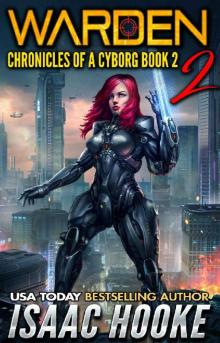 Warden 2
Warden 2 Devastator
Devastator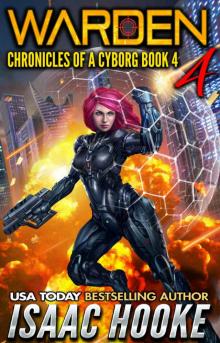 Warden 4
Warden 4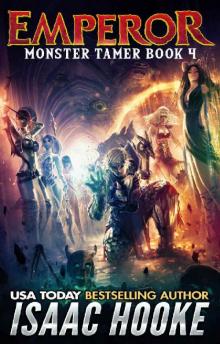 Emperor
Emperor Mech
Mech Conqueror
Conqueror Fighter
Fighter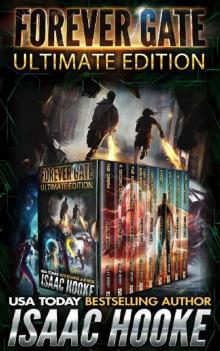 The Forever Gate Ultimate Edition
The Forever Gate Ultimate Edition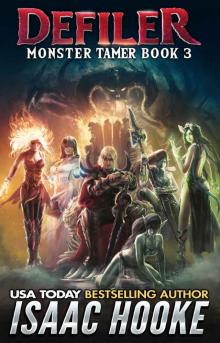 Defiler
Defiler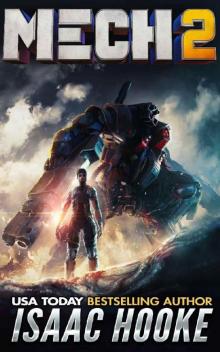 Mech 2
Mech 2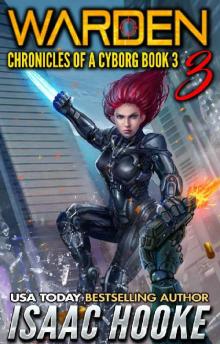 Warden 3
Warden 3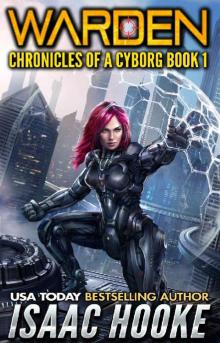 Warden 1
Warden 1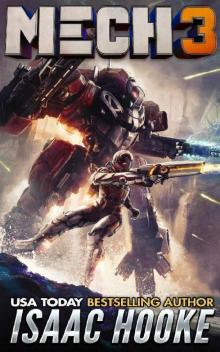 Mech 3
Mech 3 Forerunner
Forerunner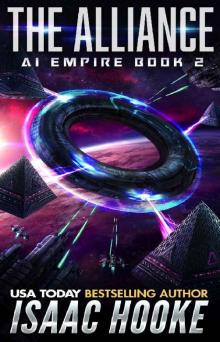 The Alliance (AI Empire Book 2)
The Alliance (AI Empire Book 2)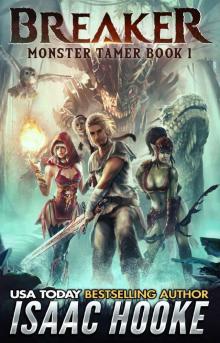 Breaker (Monster Tamer Book 1)
Breaker (Monster Tamer Book 1) Bender of Worlds
Bender of Worlds The Pendulum Swings (The Forever Gate Book 8)
The Pendulum Swings (The Forever Gate Book 8)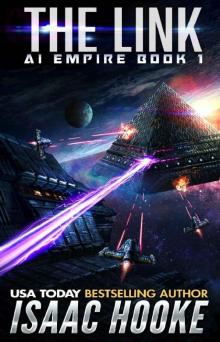 The Link
The Link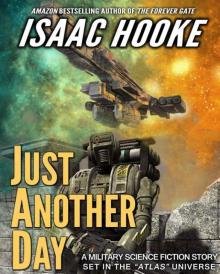 Just Another Day
Just Another Day Star Warrior
Star Warrior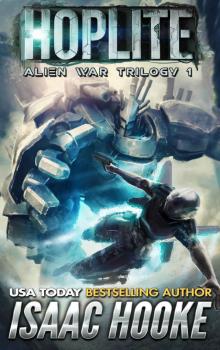 Alien War Trilogy 1: Hoplite
Alien War Trilogy 1: Hoplite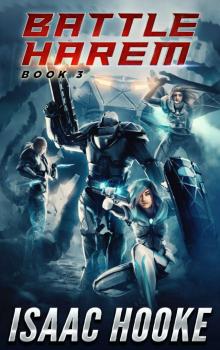 Battle Harem 3
Battle Harem 3 The Ethan Galaal Series: Books 1 - 3
The Ethan Galaal Series: Books 1 - 3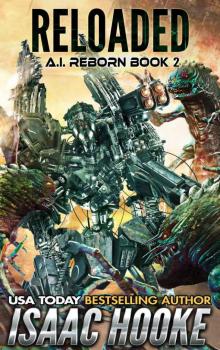 Reloaded
Reloaded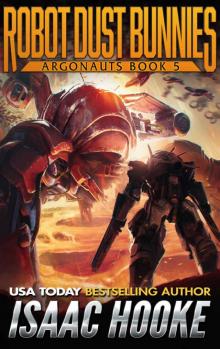 Robot Dust Bunnies (Argonauts Book 5)
Robot Dust Bunnies (Argonauts Book 5) Battle Harem
Battle Harem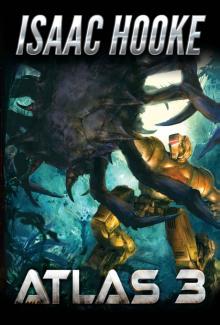 ATLAS 3 (ATLAS Series Book 3)
ATLAS 3 (ATLAS Series Book 3) Argonauts 2: You Are Prey
Argonauts 2: You Are Prey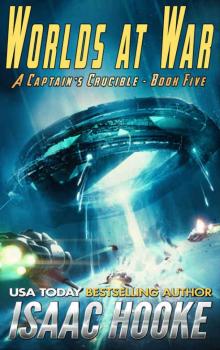 Worlds at War (A Captain's Crucible Book 5)
Worlds at War (A Captain's Crucible Book 5)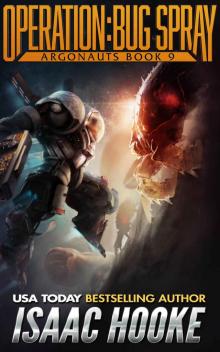 Operation: Bug Spray (Argonauts Book 9)
Operation: Bug Spray (Argonauts Book 9)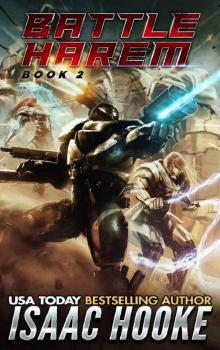 Battle Harem 2
Battle Harem 2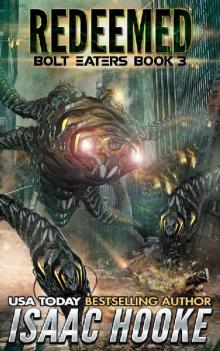 Redeemed (Bolt Eaters Trilogy Book 3)
Redeemed (Bolt Eaters Trilogy Book 3)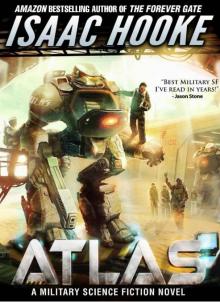 Atlas
Atlas Argonauts 1: Bug Hunt
Argonauts 1: Bug Hunt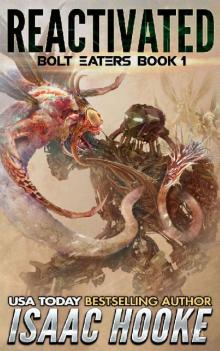 Reactivated (Bolt Eaters Trilogy Book 1)
Reactivated (Bolt Eaters Trilogy Book 1)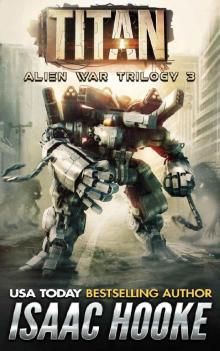 Alien War Trilogy 3: Titan
Alien War Trilogy 3: Titan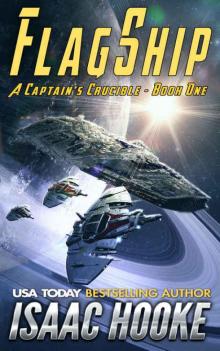 Flagship (A Captain's Crucible #1)
Flagship (A Captain's Crucible #1)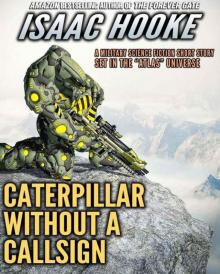 Caterpillar Without A Callsign
Caterpillar Without A Callsign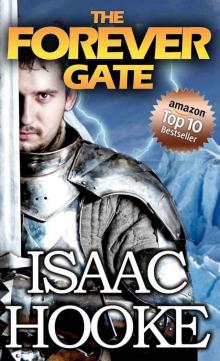 The Forever Gate
The Forever Gate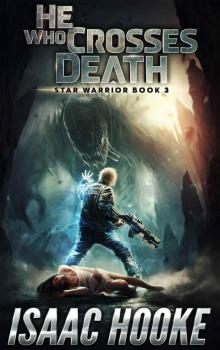 He Who Crosses Death (Star Warrior Quadrilogy Book 3)
He Who Crosses Death (Star Warrior Quadrilogy Book 3) Reforged (Bolt Eaters Trilogy Book 2)
Reforged (Bolt Eaters Trilogy Book 2)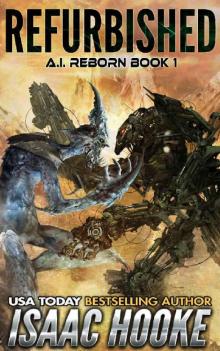 Refurbished
Refurbished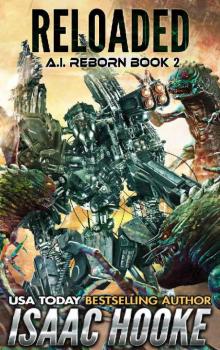 Reloaded (AI Reborn Trilogy Book 2)
Reloaded (AI Reborn Trilogy Book 2) He Who Crosses Death
He Who Crosses Death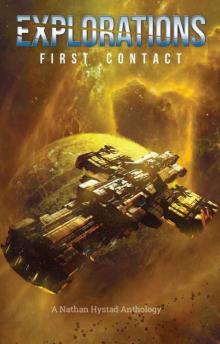 Explorations: First Contact
Explorations: First Contact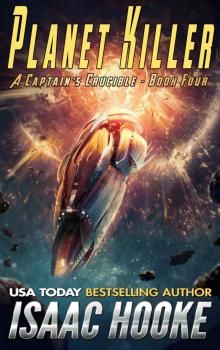 Planet Killer (A Captain's Crucible Book 4)
Planet Killer (A Captain's Crucible Book 4)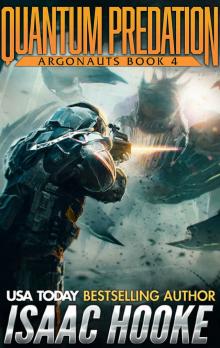 Quantum Predation (Argonauts Book 4)
Quantum Predation (Argonauts Book 4) Clandestine-IsaacHooke-FreeFollowup
Clandestine-IsaacHooke-FreeFollowup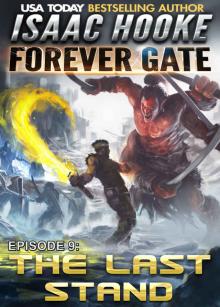 The Last Stand (The Forever Gate Book 9)
The Last Stand (The Forever Gate Book 9)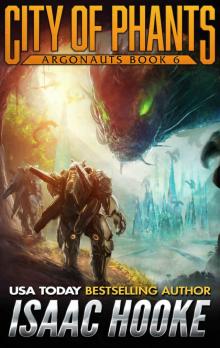 City of Phants (Argonauts Book 6)
City of Phants (Argonauts Book 6) Test of Mettle (A Captain's Crucible Book 2)
Test of Mettle (A Captain's Crucible Book 2)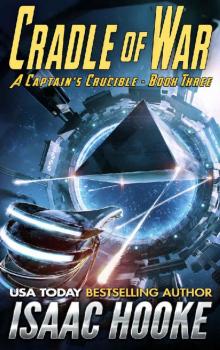 Cradle of War (A Captain's Crucible Book 3)
Cradle of War (A Captain's Crucible Book 3)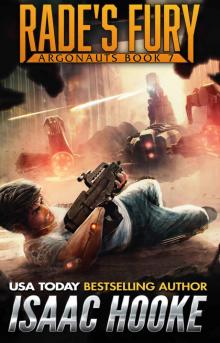 Rade's Fury (Argonauts Book 7)
Rade's Fury (Argonauts Book 7)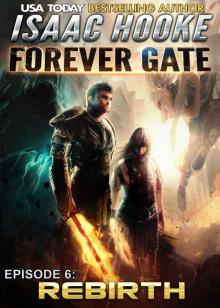 Rebirth (The Forever Gate Book 6)
Rebirth (The Forever Gate Book 6) The Forever Gate Compendium Edition
The Forever Gate Compendium Edition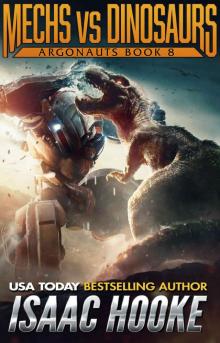 Mechs vs. Dinosaurs (Argonauts Book 8)
Mechs vs. Dinosaurs (Argonauts Book 8)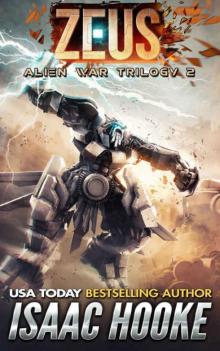 Alien War Trilogy 2: Zeus
Alien War Trilogy 2: Zeus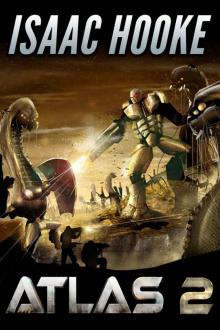 ATLAS 2 (ATLAS Series Book 2)
ATLAS 2 (ATLAS Series Book 2) Operation_Bug Spray
Operation_Bug Spray